Recently, LearnWorlds and Teachable ran 2-3 day events with marketing, sales, and content creation industry leaders giving advice on building and selling online courses. There were some great presentations, but not many people have time to watch 40+ hours of talks...so I've summarized the key points to do with course marketing and sales for you below. I also added my top 15 at the start for the tl;dr crowd.
Almost every talk had quite a few "success stories" - so for every point just imagine "Joe Blogs the guitarist" or "Jane Blogs the working mom" applying the technique and then making it rain.
Contents
- Favorite 15 - Me
- "How to create and grow a YouTube channel to market your online course" - Ron Stefanski
- "How to Drive Tons of Qualified Traffic to Your Online Course" - Neil Patel
- "How to apply Growth Marketing Principles to grow your course through Podcasting" - Aazar Shad
- "Using automated email campaigns to market and sell your online course" - Brian Olson
- "How to transition from a corporate environment to becoming a consultant and then an online business owner and course creator" - Sigrun Gudjonsdottir
- "How to multiply your course sales with affiliates" - Matt McWilliams
- "How To Increase Your ROI For Your Course Marketing Efforts" - Sandras Phiri
- "How to leverage affiliate joint ventures for a successful course launch" - Stella Mikraki
- "How to effectively promote online courses without having to rely on paid ads" - Farzad Rashidi
- "The Funnel Fill-Up & Convert Formula: The fastest way to find the perfect students for your online course and convert them to paying customers" - Destini Copp
- "Scale Beyond 1-1 Without Working More Hours Or Sacrificing Client Results" - Jane Sagalovich
- "Starting from zero: Building a multi-channel marketing mix" - Tim Stevenson
- "How to troubleshoot your online course sales funnel and stop wasting money" - Tom Libelt
- "The Power of The Pre-Sale: How to crush sales before your course is even complete" - Jason Ampel
- "How to increase word-of-mouth on your online business" - Raúl Galera
- "How to Explode Your Business Growth Using the Power of Quiz Funnels" - Ryan Levesque
- "How to Use YouTube to Drive Course Sales" - Gillian Perkins
- "Pocket Products: The Simple Strategy for Growing Your Audience and Your Revenue at the Same Time" - Courtney Foster Donahue
- "LinkedIn Marketing for Coaches, Consultants & Course Creators" - Terry Rice
For my money, Terry Rice's talk on LinkedIn marketing was the best (coincidently the last on this list).
Favorite 15 (The Cream of the Crop)
YouTube
- Make sure your video description ends with the same brand overview blurb because that makes YouTube more likely to recommend your other videos (YouTube recognizes that similarity). [Ron Stefanski]
- Webinars can really grow your list, but nowadays, much easier to get people to use Facebook live and YouTube live. [Sigrun Gudjonsdottir]
- 2 Key things the YouTube algorithm cares about - (i) Click Through Rate (CTR) - greater than 5% is considered great, and (ii) View Duration. Hence you need to prioritize an intriguing thumbnail and title for your videos. Other things that help: tags, likes, comments, external traffic, metadata. But the CTR + Duration are by far the most important. Bottom line: Create videos people are interested in, create interesting videos that keep people's attention. [Gillian Perkins]
Include a call to action in your cover [Terry Rice]
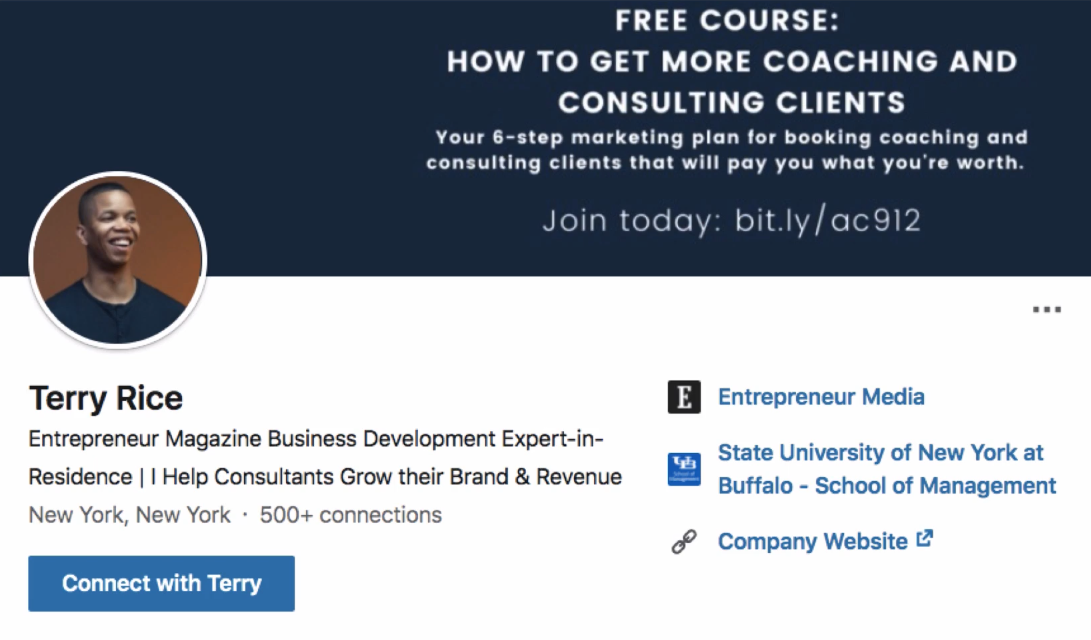
The more engagement you get for your post, the more reach you get in the newsfeed. This is how LinkedIn determines which content to show to more people. So you want to encourage comments. respond to all comments and keep the conversation going (leave a real comment, not just an emoji) [Terry Rice]
Email marketing
- Your email sign up call to action should be clear and descriptive - not "sign up", instead put something specific like "send me the course" [Brian Olson]
- Consider a Joint Venture (JV) launch for your course - this means that during the pre-launch time your JV partners mail their email lists and tell people about your online course. This can be a very powerful way to launch a course even if you do not have an audience. Plus it's free. [Stella Mikraki]
Affiliate marketing
- Ask your customers to be affiliates (setup autoresponders for this, e.g. 100 days after a course purchase)
Course Structure
- People have limited time. The highest value courses get the student through the journey quickly. [Jane Sagalovich]
Sales Copy
- Social proof is important - make sure you message students who have completed your course for testimonials. Don't just write the text, ideally have screenshots from other platforms. [Jason Ampel]
Quiz Funnels
Use Quiz Funnels. A quiz funnel is a series of questions when someone lands on your website which allows you to better understand their situation so that you can customize the product, offer, or messaging to that person. 5 reasons to use quiz funnels: (i) cheap leads due to higher engagement and an increased chance of virality (ii) high sales conversion since your offer is customized based on quiz answers (iii) high volume - again due to virality (iv) valuable data from quiz results (v) Allows you to better serve your customers [Ryan Levesque]
Use the power of "micro-commitments" - so never ask more than one question per screen. Always start with a "Grease the wheels" question that is low risk, low threat. Always end with a lead capture question. The sweet spot is 5-12 questions. [Ryan Levesque]
Referrals
- Referrals can be super-honest and non-slimy. This can be a way to build rapport with your loyal customers - see example copy below [Raúl Galera]
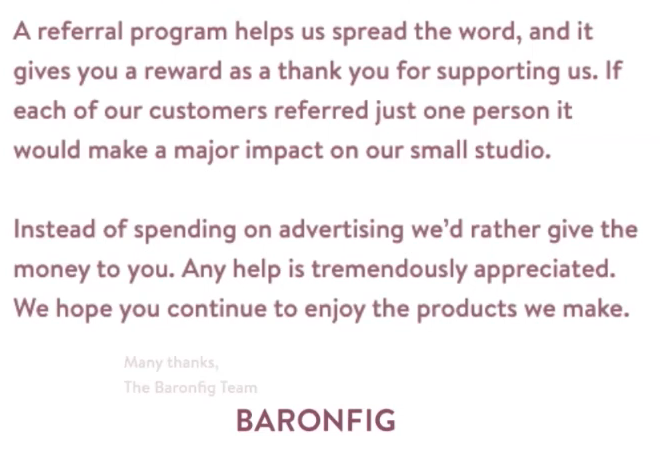
Analytics
- If you can't track it, you can't fix it. n.b. Google and Facebook lie about their numbers. They are usually off by 30% when it comes to conversions (over or underreported) so track it yourself. Don't spend one dollar on marketing without tracking in place.
"How to create and grow a YouTube channel to market your online course"
- YouTube allows you to connect with people in a different way - worth understanding some key facts: 70% of what people watch on YouTube is governed by its algorithm, also ~70% of traffic on YouTube is on a mobile device.
- Quality matters, but not that important. A cellphone is good enough. Your goal with YouTube is to get people to sign up to an email list or subscribe to your channel.
- When you create YouTube videos, focus on SEO - check for content that is out of date - YouTube likes content that is up-to-date.
- Two types of video: SEO & Recommendation. SEO a video that targets a typical search query. Recommendation is more clickbaity "look at this new trick I found in product X" kind of video. When you are starting out you want to do ~80% SEO videos. At >10k following, you can increase the percentage of recommendation videos up to more like 50%
- Make sure you have descriptions for your video with a lot of detail and tags for each bit of the description which link to the relevant timestamp in the video. Make sure your description ends with the same brand overview blurb, because that makes YouTube more likely to recommend your other videos (YouTube recognizes that similarity).
- Make sure your video description contains a call to action (to email list or subscribe) - both in the description and also with a pinned comment.
- Set up an email drip sequence for after people sign up to the email list.
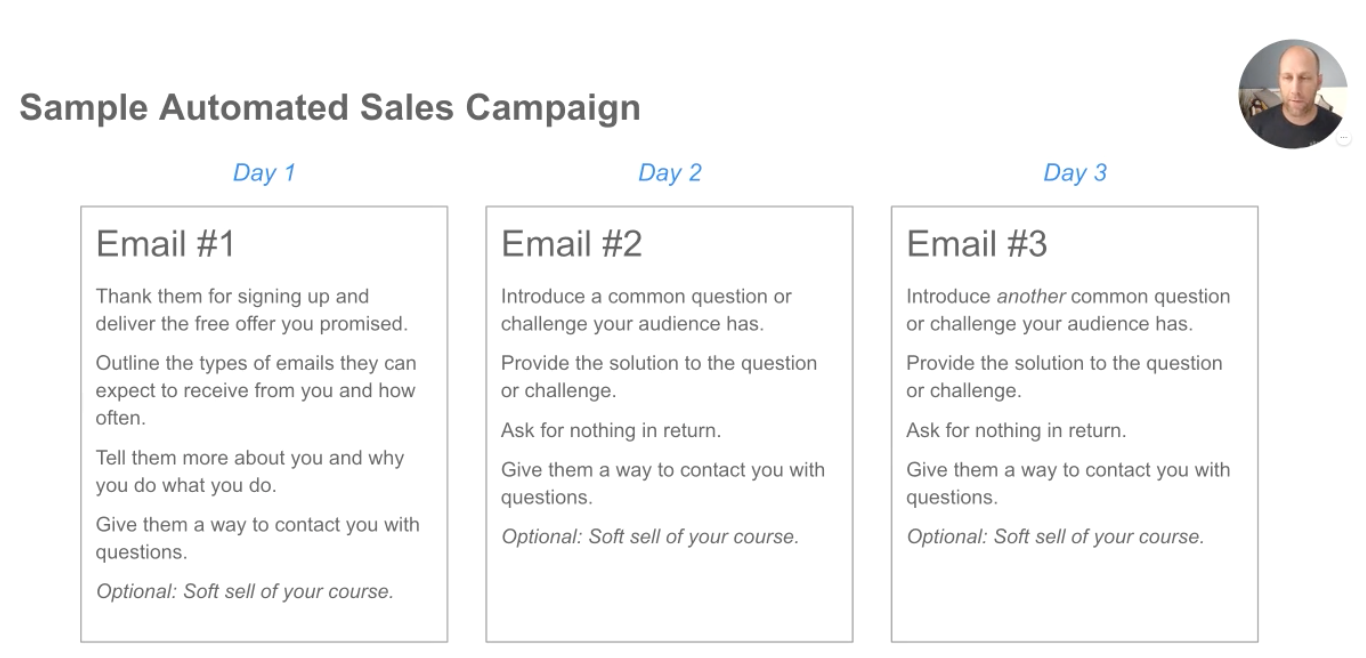
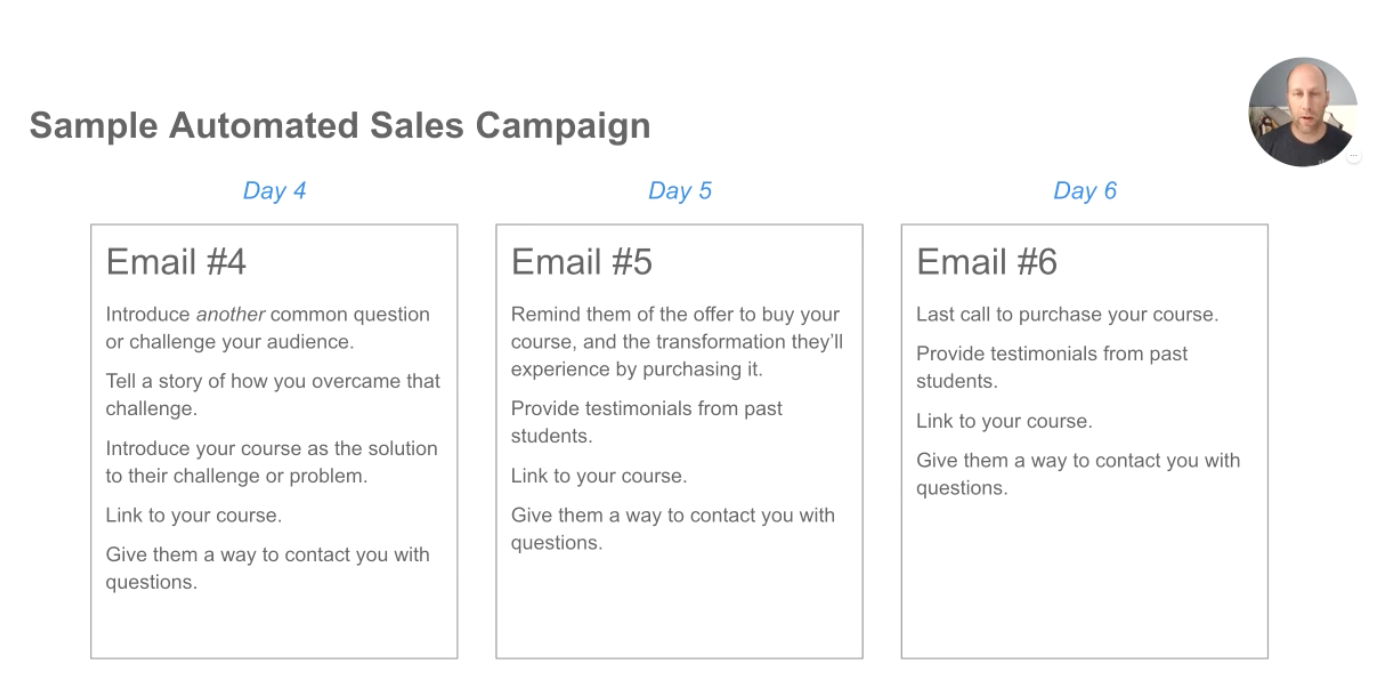
"How to Drive Tons of Qualified Traffic to Your Online Course"
- Marketing is all about marginal gains, no silver bullet. It's about incremental improvements and gains.
- Translate your content. If you translate your content to other languages competition is less fierce and conversions are better (mentioned Brazil and Germany in particular)
- Host your site from a Content Delivery Network (CDN) - speed is important for SEO. Not just images, all files.
- Update your content regularly (just as important as creating new content once you have a critical mass of content)
- YouTube SEO - make sure you rank for terms on YouTube - a little different from traditional SEO. On YouTube SEO it's much more about how the video does in the first 24 hours. You want your video to do well early - so make sure you send to your audience when you first publish a video. Line up your promotion. ~10 mins is an ideal length. [Author note: This point was contradicted in Gillian Perkins talk - see below]
- Add games to your site (e.g. spin a wheel to win a prize, enter email address to try).
- Free tools - N. Patel has Ubersuggest. [Author note: Neil loves to throw this 'just make tools' point around, but to develop something like Ubersuggest is very challenging - still his numbers are solid.]
"How to apply Growth Marketing Principles to grow your course through Podcasting"
by Aazar Shad
- The key thing with podcasts is that it creates brand affinity - builds a relationship with an audience. Other benefits include more word-of-mouth and increasing authority.
- Principle: Make your podcast so good that people tell others
- Principle: Get them to the end. Provide a reason why people might want to stick around and learn more.
- Principle: Make it personal and/or something you have strong opinions about
- Principle: Consider who is not the audience. Better a small tribe that believes in you than a large
one that is ambivalent

"Using automated email campaigns to market and sell your online course"
For building email an list: it's advisable to offer something of value for free - solve a real immediate problem which your (potential) audience has. The offer should be transformational and promise future value. Finally, the offer should be convenient (i.e. they will get it soon). Typical options include: short-email courses, mini-courses, webinars, time-based challenges, coupons, exclusive bonus content, and downloadables such as ebooks, checklists, plans, templates, chapters
Your Signup form should make it very clear what the person is signing up for - e.g. managing their expectations that they will also be getting regular tips. Minimize the number of fields on your form - name + email address is ideal. Your call to action should be clear and descriptive - not "sign up", instead something specific like "send me the course".
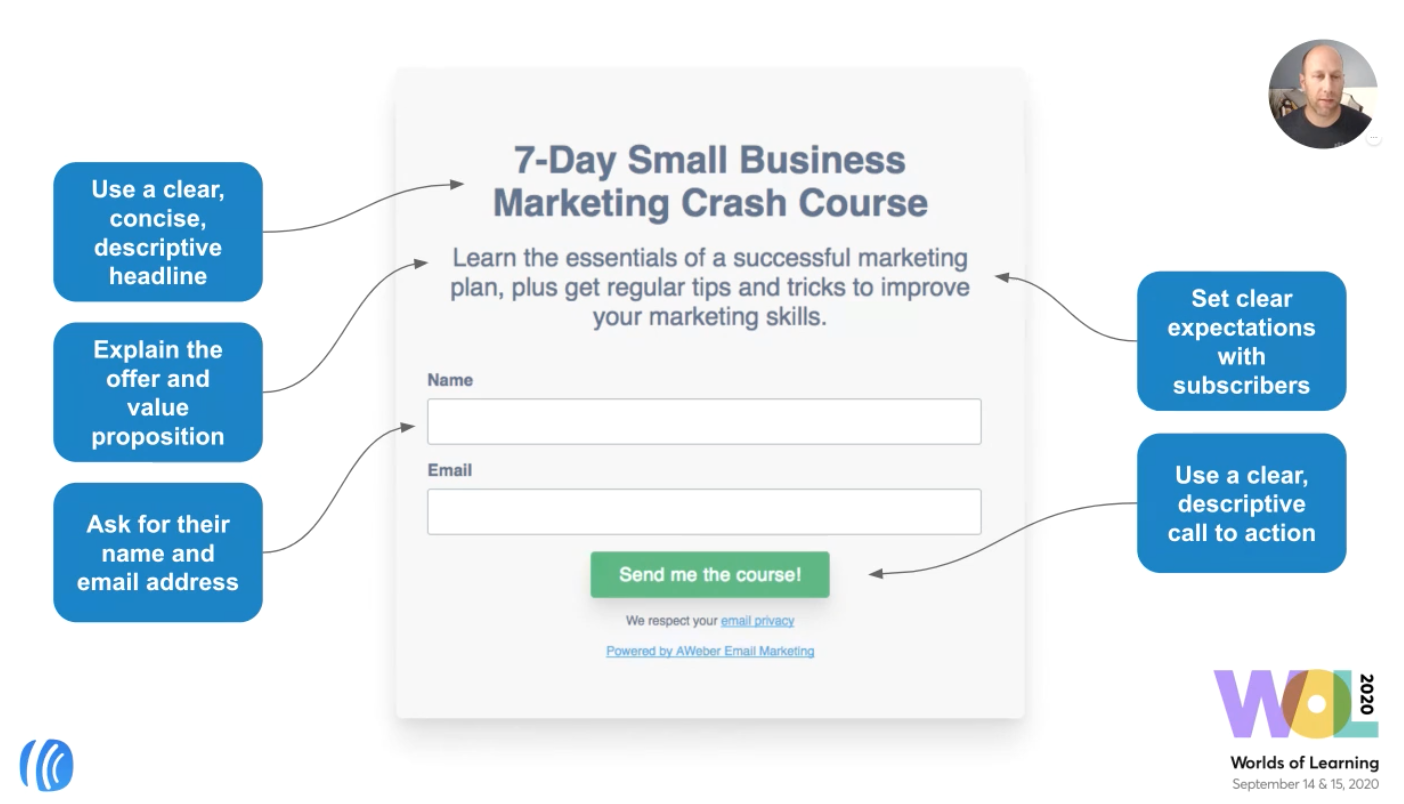
Make sure your signup form is on the highest traffic pages on your website. Add callouts to your existing content in your YouTube videos, live streams, podcasts, instagram posts etc.
Leverage web push notifications - if their browser is open they will see these meaning that you can drive people back to your website even after they have left your site
Guest blogging and podcasting is another way to attract people to your offer
Set up a welcome email campaign - delivers on the promise of your incentive. Typical sees 3X the engagement you would see on a promotional email. This is when you have the most attention from your subscribers. During the sequence, introduce common questions/challenges your audience faces and provide an answer. Early in the sequence, no selling. Just value. Always make sure there is a way for people to contact you in these emails.
When your sequence fails, it's important to try and find out why it failed. Possible reasons include: they didn't see your email, copy wasn't persuasive, value proposition wasn't high enough, they didn't believe it would solve their problem, the course was priced too high, they don't have time to commit right now. This will allow you to segment your audience so you can tailor your communications and offers to the audience. Segmentation options are myriad, including skill level, interests, motivations, language, geography, pages visited, actions taken on your site/emails.
Use the segmentation (described in the previous point) to target your upsells and cross-sells to the right students
"How to transition from a corporate environment to becoming a consultant and then an online business owner and course creator"
Your "brilliant course idea" is not going to just come. Instead, stop thinking and start doing. Focus on things you already know.
If you run a challenge, some percentage will want to buy from you afterward - make sure you have something to sell them!
When marketing through facebook groups, you're not selling. You're giving. Just have your business site on your profile page - that is enough.
Webinars can really grow your list, but nowadays, much easier to get people to use Facebook live and YouTube live.
You can hire a business coach (make sure they have done what you are trying to do), but there are also now excellent programs instead. Above all: You do need to invest in yourself. [Author note: shout out to growthmentor]
Coaching can really move the needle as an additional income stream (alongside your course). Can also inform your future courses.
Never offer two courses at the same time.
Don't get complacent about list building, but sales come first.
Sell your course first, then create it.
Putting the course on your website and hoping someone finds it and buys it is fairly ineffective. You should do launches.
Don't launch when there are elections. People need to feel hopeful when they are buying something.
"How to multiply your course sales with affiliates"
Affiliate programs allow you to make money before you spend it (as opposed to ads), can be infinitely scaled, no need to worry about targeting (affiliates do it for you), affiliates bring in warm prospects (and hence higher conversion rates).
The best way to start, grow and scale an affiliate program is to copy others.
Start recruiting affiliates at least 6 months before launch OR immediately after launch after you have created some buzz "ABR" (Always be Recruiting). Start with who you know, watch other affiliate launches to meet other affiliates, join facebook groups in the relevant niches
Use Google to find potential affiliates: (i) Look up your competitors, (ii) look for reviews, (iii) look for reviews which are linking using an affiliate link, (iv) Check writer & site is a good fit (v) Look up contact details for the potential affiliate. ~15% of the time you can use whois.domaintools.com, otherwise look for their social media, contact forms, infer the email address etc. (vi) Approach them about joining your affiliate program - preferably after building some rapport via social media, replying to newsletter emails. Keep the initial contact short.
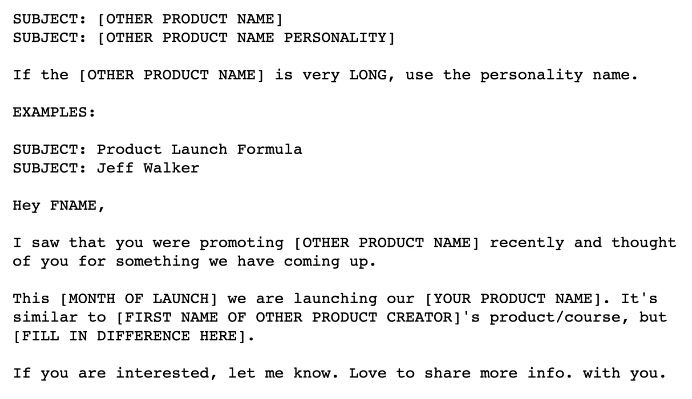
Ask your customers to be affiliates (setup autoresponders for this, e.g. 100 days after a course purchase), consider working with competitors for upsell/down-sell and niche affiliate promotion.
Ask your current affiliates to refer affiliates (and offer them a second-tier commission)
Aim for a diversified "army" of affiliates (mix of big and small). It is a myth that most sales come from top 3 or top 10 affiliates.
"How To Increase Your ROI For Your Course Marketing Efforts"
Understand your numbers and goals - you should track your conversion rate from leads -> prospects -> customers as well as followers -> community -> customers
Don't neglect sales - have a dedicated sales day where you ensure that newsletter/webinar content includes some element of sales.
Optimize your website - (i) bounce rate (consider limiting links that take people away from the page), (ii) Nurture leads, (iii) Refine your retargeting (e.g. first-time visitors are offered value, not an immediate sales pitch)
"How to leverage affiliate joint ventures for a successful course launch"
One of the main reasons why online course authors struggle to sell is because they don't have an active audience or community for their business
Consider a Joint Venture (JV) launch for your course - this means that during the pre-launch time your JV partners mail their email lists and tell people about your online course. This can be a very powerful way to launch a course even if you do not have an audience. Plus it's free.
Find JV partners by Googling relevant search terms and finding sites in your niche (check they get reasonable traffic using tools such as ahrefs), or by looking for social media groups in that niche.
Make sure you study how to launch your course - i.e. preselling, creating anticipation, having doors open and close on specific dates (scarcity).
Put some strategic priority in building a community.
"How to effectively promote online courses without having to rely on paid ads"
For content marketing, you should consider 3 types of content: (i) Link building content - e.g. original research which incentivizes other sites to link back to your website. (ii) SEO driven traffic, which is potentially going to bring in a lot of traffic to your website (iii) Conversion-focused traffic - not necessarily bringing in a lot of traffic, but more specific case-studies which drive conversions
Your backlinks profile is key - this is like a "Mean Girls popularity contest".
Don't just start writing blog posts. Ensure you do your keyword research (e.g. using ahrefs, ubersuggest, keysearch.co). Rule of thumb: Don't target keywords that have a difficulty higher than your domain authority rating.
Keyword opportunity score = (1/Difficulty) Clicks (CPC+1)
Pay very close attention to the user intent for different keywords - only target the sort of user intent which would be relevant to your course
Once you publish your content, it's going to be crickets (unless you already have a high domain authority). So promote your content via: (i) Tell people/groups/companies you mentioned in your article (ii) Tell those who have written similar articles (iii) Those who have shared similar articles on social media (iv) Those who have backlinked to similar articles
"The Funnel Fill-Up & Convert Formula: The fastest way to find the perfect students for your online course and convert them to paying customers"
Facebook/Insta gram ads are effective for purposes of list building - allows you to test audiences. Start ads to build list 8 weeks before your launch/event - this will warm up your audience. Video ads are effective - talk about your story, challenges you have faced. About 14 days before your launch switch to registration ads. 3 days before your summit/event/launch - send out a reminder ad.
Use retargeting ads to promote offers until the cart closes
People that buy from you/invest in you are more likely to buy from you again.
"Scale Beyond 1-1 Without Working More Hours Or Sacrificing Client Results"
The "Hybrid Online Course" model is a combination of modules + support. Great first step away from 1:1 consulting/coaching because it still has a lot of human touch points.
3 keys to maximizing profit, time and impact: (i) design a journey for your perfect clients, (ii) clone yourself (i.e. record your high impact guidance), (iii) don't fully eliminate support
For any video, also provide text (preferably with more info) - different people have different learning styles, and provides a useful reference later
80% of your course should be about action (20% information) - moving the student down the path, rather than just giving them information
People have limited time. The highest value courses get the student through the journey quickly. [Author note: obviously it's a balancing act, if people feel you are holding back important information this can be very frustrating]
"How to troubleshoot your online course sales funnel and stop wasting money"
If you can't track it, you can't fix it. n.b. Google and Facebook lie about their numbers. They are usually off by 30% when it comes to conversions (over or underreported) so track it yourself. Don't spend one dollar on marketing without tracking in place.
You want sales funnel tracking and heat maps (hotjar is free for the first 3 pages) to see how people interact with your key pages.
Top of the sales funnel can be tracked with codes in the URL. Tracking the middle of the funnel is more challenging. You'll need a specialist tool to easily view the flow (Funnelytics is one paid option). This allows you to reverse engineer sales, which is a very important tactic to show you where to focus your energy.
"Starting from zero: Building a multi-channel marketing mix"
In today's environment where there is so much competition and noise for attention, content consistency is very important - both in terms of quality and regularity.
Nothing is ever perfect. Don't be afraid to put out a minimum viable product.
Once you have reached a certain size/audience, you may attempt larger events (i.e. virality). For these, leverage the entire marketing mix at once, combined with paid ads and PR efforts. Plan around key themes - link to notable events. These kinds of events are very complex to orchestrate, use social media management tools and schedule them ahead of time to shield your time. This also makes it easier to ensure that content/message is aligned across channels.
Always balance social media ad spending with organic options (e.g. SEO), since social media often requires a lot of money
Leverage freelancers at critical times (e.g. PR expert for a major event launch). [Author note: it's very easy to get fleeced by PR firms, be extremely careful with this bit of advice]
"The Power of The Pre-Sale: How to crush sales before your course is even complete"
Social proof is important - make sure you message students who have completed your course for testimonials. Don't just write the text, ideally have screenshots from other platforms.
Pre-sales are very powerful. Set them up with 5 steps: (i) Create the course & set it at 50% discount. Give it an actual date, not just "coming soon" (ii) Create a free webinar and email your audience (optional: also FB/Insta ads). About 2 weeks before the course goes live is ideal. Expect 40%-50% of people to show up. (iii) In your webinar run through the problem, the feeling, why it's wrong, how you help, the solution, then CTA, results. (iv) The sell - clear call to action, scarcity, time constraints. (v) Follow up email sequences.
"How to increase word-of-mouth on your online business"
Your customers are the best salespeople you could possibly have - believe in your brand, their audience trusts them. they don't sound like salespeople.
Referrals can be super-honest and non-slimy. This can be a way to build rapport with your loyal customers - see example copy below

Teachable Summit
"How to Clarify Your Message and Build Your Brand"
- Leverage your uniqueness - this inspires people to buy from you. What do you have or know that others don't care about or notice?
"How to Explode Your Business Growth Using the Power of Quiz Funnels"
Use Quiz Funnels. A quiz funnel is a series of questions when someone lands on your website which allows you to better understand their situation so that you can customize the product, offer or messaging to that person. 5 reasons to use quiz funnels: (i) cheap leads due to higher engagement and increased chance of virality (ii) high sales conversion since your offer is customized based on quiz answers (iii) high volume - again due to virality (iv) valuable data from quiz results (v) Allows you to better serve your customers
For quiz funnels, ensure you have a blueprint, a "quiz creation flow"
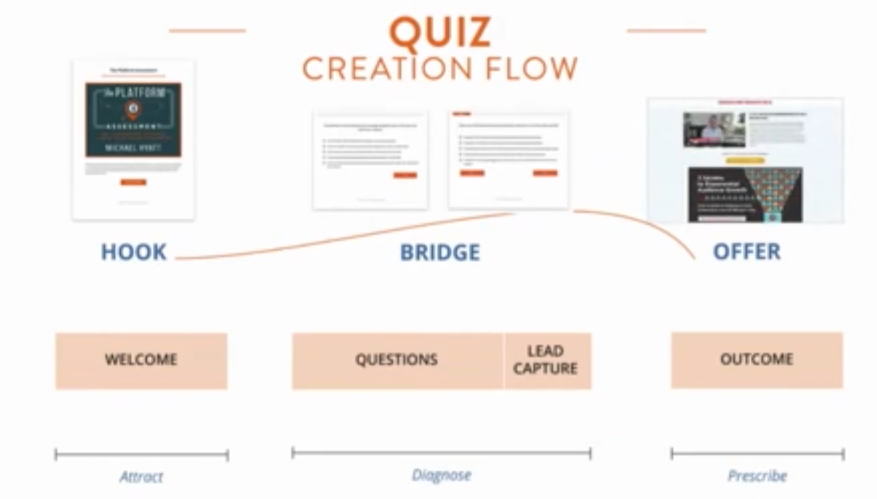
There are 3 quiz frameworks: (i) "Type quiz": Assigning people to a particular "type" or bucket based on their answers. e.g. "what type of skin do you have?" (ii) "Killer quiz": unveil a mistake that someone is making in their life which is holding them back. Works due to psychology of loss aversion - fear of loss beats the promise of gain e.g. "find out your golf swing killer" (iii) "Score quiz": Give people a quantifiable measurement that gives people an indication of where they are now on their journey. Works because of the psychology of social comparison
Use the power of "micro-commitments" - so never ask more than one question per screen. Always start with a "Grease the wheels" question that is low risk, low threat. Always end with a lead capture question. Thr sweet spot is 5-12 questions.
Use the right tool for your quizzes (he recommends bucket.io)
"How to Use YouTube to Drive Course Sales"
We know how to generate leads (using lead magnets), so the question to ask is: What is the way to generate traffic. Because YouTube's algorithm is designed to match viewers with what they want to watch - this is an opportunity to get YouTube to do the work for you.
2 Key things the YouTube algorithm cares about - (i) Click Through Rate (CTR) - greater than 5% is considered great, and (ii) View Duration. Hence you need to prioritize an intriguing thumbnail and title for your videos. Other things that help: tags, likes, comments, external traffic, meta data. But the CTR + Duration are by far the most important. Bottom line: Create videos people are interested in, create interesting vidoes that keep people's attention.
Do keyword research to find topics of interest - common types of videos include (i) attract target audience - tutorials, common questions, solve common problems (ii) demonstrate your expertise - case studies, behind the scenes, your skills in action (iii) move viewers closer to buying - show product in action
The best type of opt-in offers on YouTube are content upgrades to your videos. e.g. if you've got a video tutorial, offer a checklist or guide to accompany it for those who sign up. You can mention in the video, or add a link to the opt-in form in the video description/pinned comment. YouTube conversion rates tend to be higher than blogs (speaker talks about ~12%)
"Pocket Products: The Simple Strategy for Growing Your Audience and Your Revenue at the Same Time" Courtney Foster Donahue
- "Pocket Products" - a very specific type of tripwire
- a low-cost, high-value, small-scale digital product that quickly solves one problem for your
audience. A Pocket Product should be $15-$100, a should be digital. It becomes a gateway to
other products and services. This concept is applicable to both B2B and B2C. Another way to look at
a pocket product is lead generation that pays for itself. They are not courses, lead magnets,
service-based offers, memberships or physical products. They are digital downloads, micro-courses,
ebooks, audio recordings, digital tools/templates.
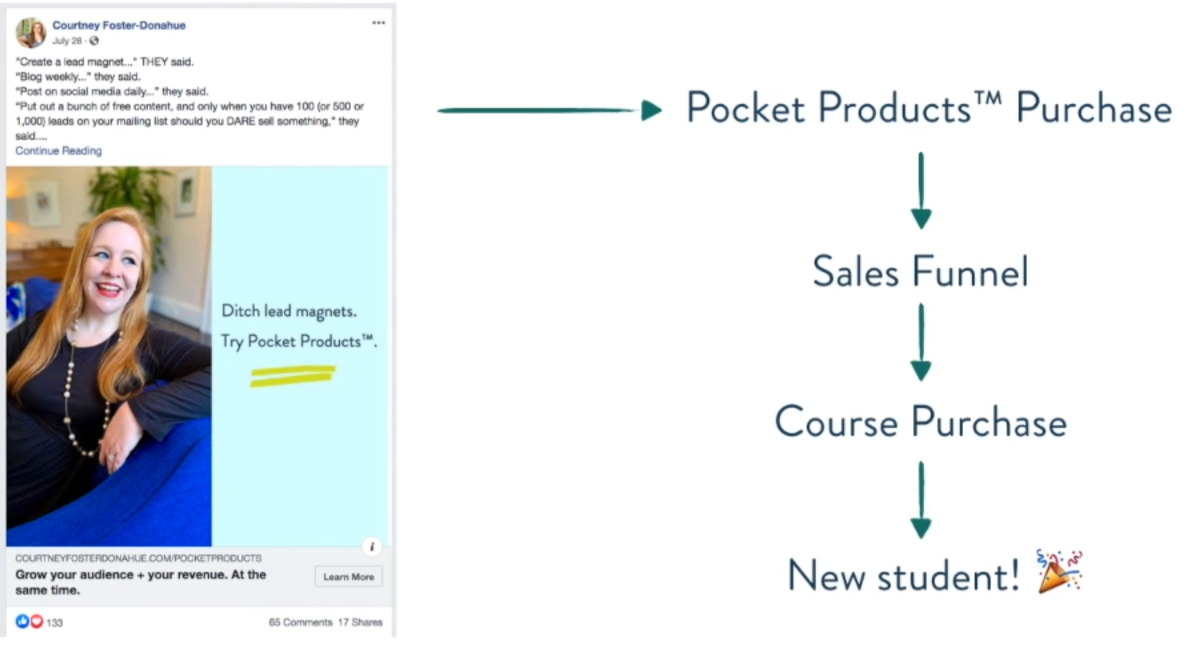
Pocket Products have notable advantages over lead magnets in that they deliver more value and allow you to fill your list with customers rather than just leads.
Choose your pocket product using the WAND method: Whiny, Audacious, Needy, Desire. Address your audience's want directly (setting up addressing their underlying need in other, more complex products - i.e. your course).
"LinkedIn Marketing for Coaches, Consultants & Course Creators"
LinkedIn profile optimization: Attract the right audience with your headline and your bio. Use keywords your audience searches for and/or would relate to. Use Google Trends to see which search terms are more popular.
Use a professional photo showing only your head.
Include a call to action in your cover

Upload featured content (relatively new feature) - this is the section below "about".
Don't chase likes, focus on impact. Quality over quantity. Quick hack: think of 10 questions your audience has and then begin answereing them thoroughly. Q&A videos are a very effective format for this approach.
The more engagement you get for your post, the more reach you get in the newsfeed. This is how LinkedIn determines which content to show to more people. So you want to encourage comments. respond to all comments and keep the conversation going (leave a real comment, not just an emoji)
Space your text out so it's easier to read on mobile.
Bonus notes!
Determine your content buckets. Do what fits for you. e.g. consulting, health, personality

Grow your audience by: posting content, connecting with anyone in your target audience who engages, repeat.
Use LinkedIn for surveys and research - reach out and select 50 people or organizations you would like to work with, let them know you would like to interview them for an industry report, interview them and share the results once compiled, continue the relationship.
